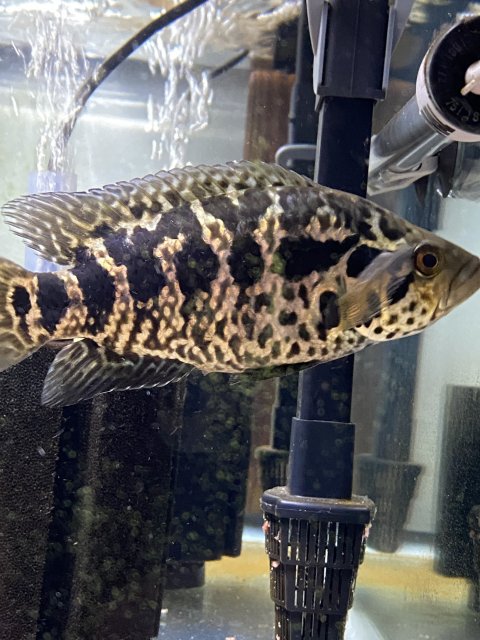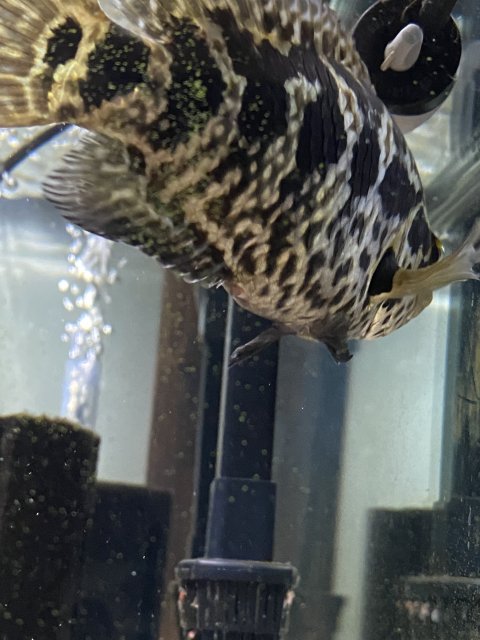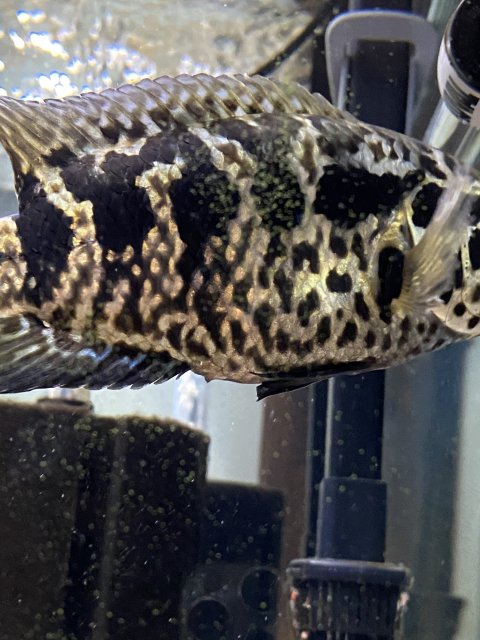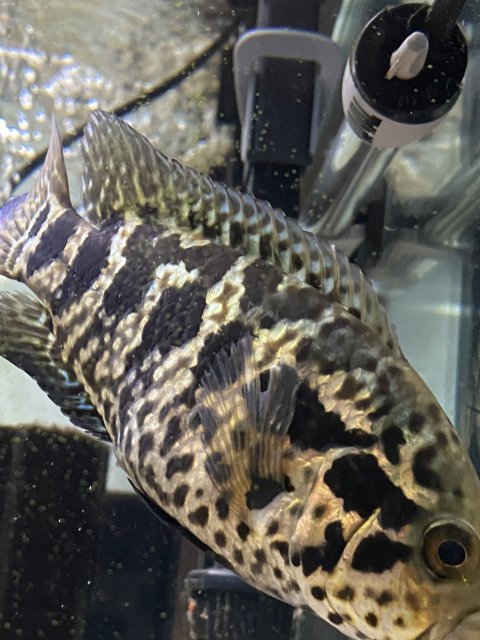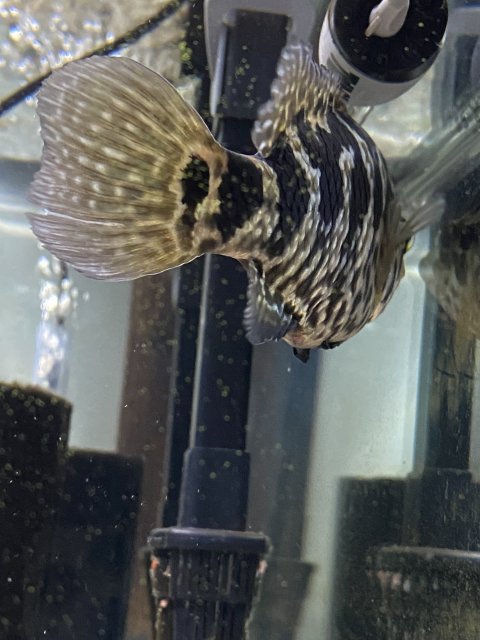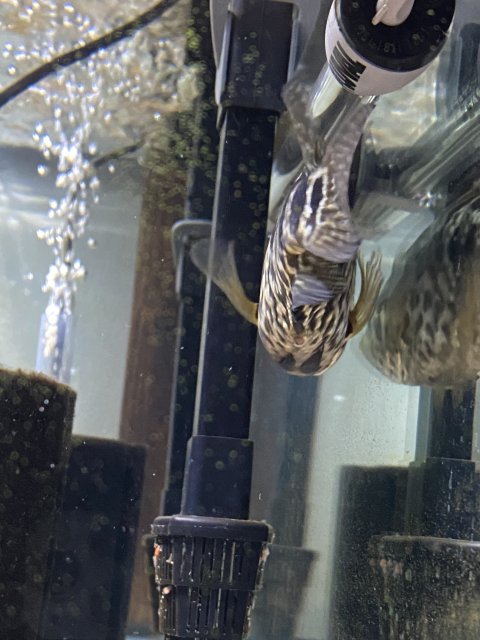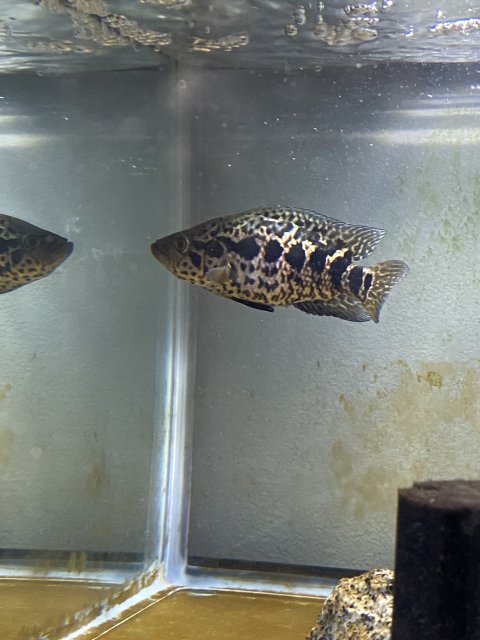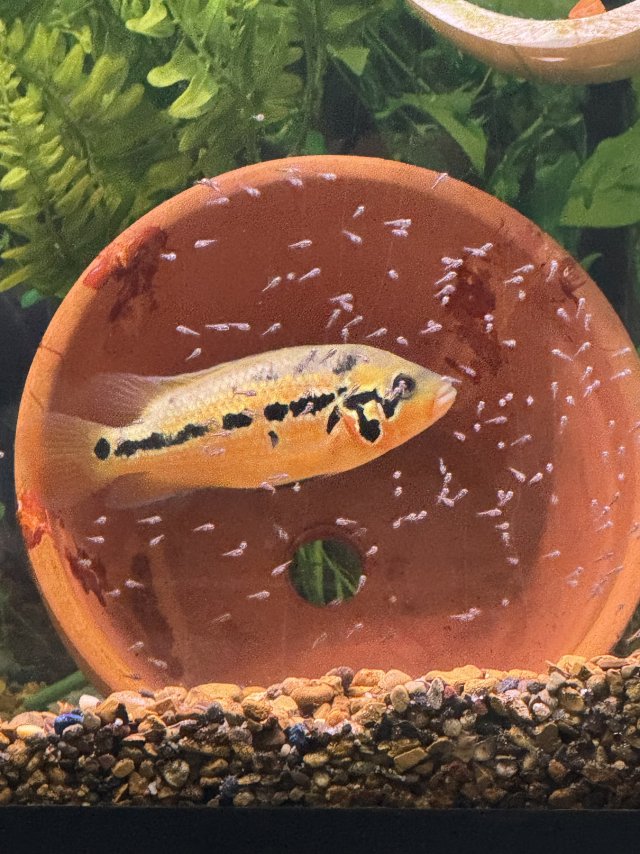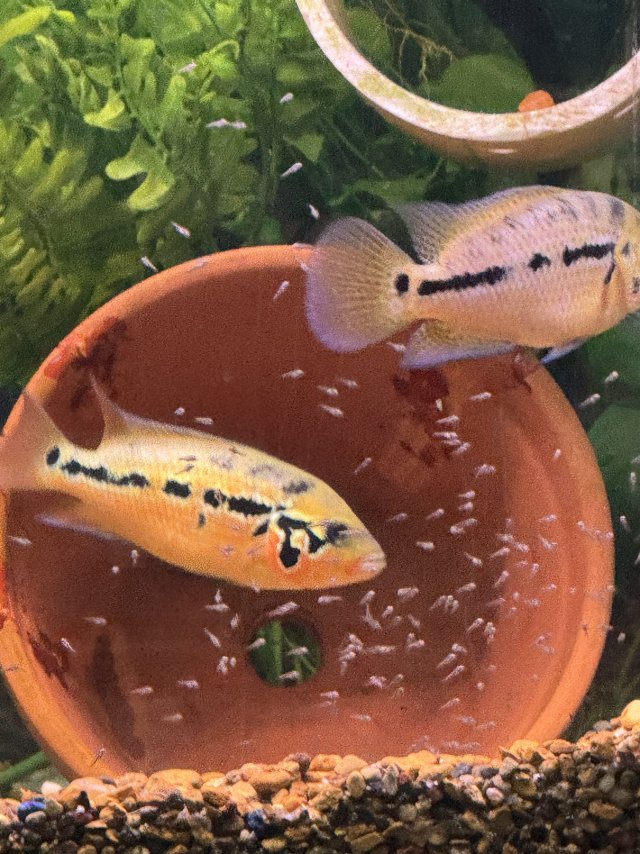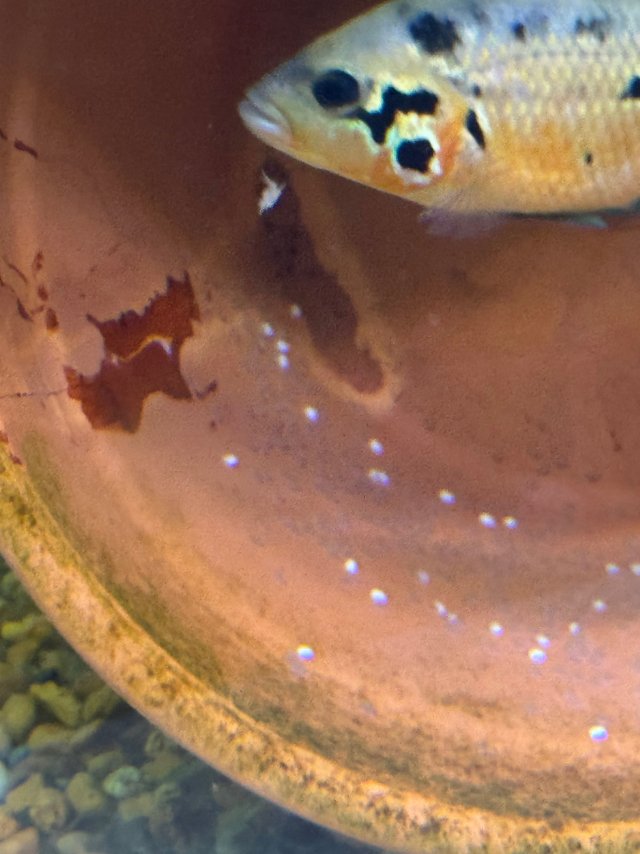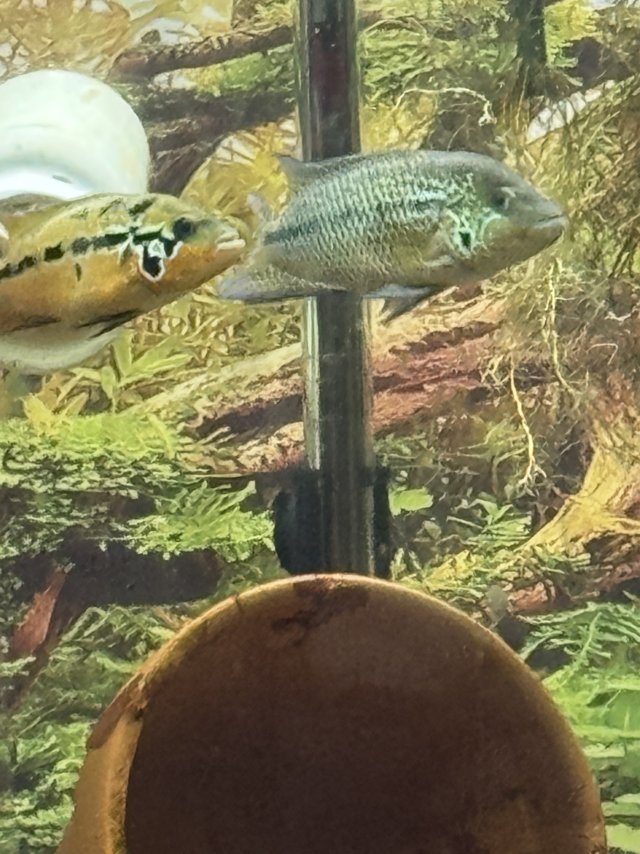Parachromis Folks - Looking for input -
- Thread starter dr exum
- Start date
You are using an out of date browser. It may not display this or other websites correctly.
You should upgrade or use an alternative browser.
You should upgrade or use an alternative browser.
The darker mid lateral patterning makes it appear female.could also be a sign of being subordinate. Of course venting this one with the others side by side is the most definitive way.
Lots of great info here already! My stance with these fish is that keeping them singly or in pairs is always best, even though community situations can work at times. And always make sure that the females have a place to escape to where the males cannot get to them at all, just in case.
Lots of great info above.
My only add would be that I have never been able to keep adult pairs in anything smaller than one pair to a 6 ft tank for any length of time.
They could grow out to about half size in tanks like 75s, but not able to maintain a permanent pair bond without enough space.
Where dither fish work in keeping many cichlids calmer, Parachromis eventually just eat them.
Some young "Ceiba" below
And trying to keep any Parachromis with subordinate cichlids like GTs, or JDs usually deesn't end well for the non-parachromis, they are just not equipt to deal with the jaw strength, and instinctual territoriality.
With other similar apex types like X Parachomis grammodes, or Nandopsis, its too close to equal ground to call whose left standing in the aftermath of inevitable territorial battles .
Hey duanes, I have the option of picking up a used 6-foot 125 gallon and was considering making it a species-only setup for a pair of RTM. I really want to avoid having fish that outgrow the tank, though, as I don’t really have any more space for larger tanks now.
Would a 125 be appropriate for a pair of these parachromis to thrive, or would they be packed in like sardines? I’m trying to weight the risk of it not working out against my desire to get into keeping parachromis!
A 125 should work long term for a pair, if you're lucky. It is minimum though.Hey duanes, I have the option of picking up a used 6-foot 125 gallon and was considering making it a species-only setup for a pair of RTM. I really want to avoid having fish that outgrow the tank, though, as I don’t really have any more space for larger tanks now.
Would a 125 be appropriate for a pair of these parachromis to thrive, or would they be packed in like sardines? I’m trying to weight the risk of it not working out against my desire to get into keeping parachromis!
But consider, 150s and 180s have the same footprint, just more depth.
A 125 should work long term for a pair, if you're lucky. It is minimum though.
But consider, 150s and 180s have the same footprint, just more depth.
Alright thanks for the info - I might skip on the 125 and wait around for a 150 or 180 before I get in on parachromis. Are Freddy’s generally the same?
This (and the follow-up on communities) is such a really great collection of info on these species, I keep coming back and re-reading!Parachromis are straightforward and break down into two broad groups….some say three.
Jags and Dovii are the brutes and will need large tanks accordingly. Jags, being smaller are easier to mix in communities and are also the most common species to find. Care is straightforward and they’ll live/breed in any water as long as it is clean…they are found primarily in Honduras and Nicaragua. Leo in mind that males can still get up to 16-18”.
dovii need larger setups given their eventual adult size and are very aggressive as a rule, though exceptions have been well documented. Given their size, should be reserved for ideally a 300 gallon or larger. That said, many keep pairs in 72x24” tanks for life. Key is staying on top of water quality of course and decor being at a minimum in such a small tank. They are found primarily in Nicaragua and Costa Rica. Dovii are the true brutes of the cichlid world rivaling temensis bass and emperors cichlids for the title of largest cichlid species.
the second group include the Multifasciatus (formerly Friedrichshtali), Motaguense,and arguably the La Cieba since they are lumped in as a variant of Multifasciatus….though many feel they deserve to be their own species. Let the ichthyologist figure that out. Multifasciatus are straightforward and their care is just like the jag in a smaller, bright yellow package. They are found from southern Mexico down to Guatemala and Belize.
Motaguense, are a bit trickier and more sensitive to poor water conditions. This is the soecies among the Parachromis most likely to get bloat as juveniles. It’s important to include a lot of roughage in their diet like chitin from the shells of insects or a blend of veggies in their pellets. They also come from water with more flow. These are medium growing fish andget to about the same size as the Multifasciatus…about a foot long for males.
the last group, if you believe it doesn’t belong with the second group, is the Friedrichshtali (formerly Loisellei). These are the most southern species of Parachromis found primarily in Costa Rica and Panama. These are also the smallest species andand Males average 10-11”. Thought tk be the most docile (which has been my experience as well), theycan be mixed with better with the medium sized, less aggressive CA cichlid tankmates. Of course, that also depends on how much room you have in the tank.
all species will breed as soon as they hit sexual maturity which is early….with most species being able to sex out and mature at a fraction of their adult size…think somewhere in the 4.5-5” range, with Motaguense being the only exception to that rule. Temps are straightforward and can range from 74-82 degrees Fahrenheit . 76-80 being better. Or 78 if you split the difference. Water params aren’t crucial but they do prefer water slightly harder than neutral…more on the alkaline side.
for pairs,my opinionfor minimum tank size for adults would be 75-90 for the three smaller species and a 150-180 for the Jags. Dovii 240. Now I know I’m inviting controversy and really don’t feel like arguing with other members who disagree. This is just my opinion.
pair bonds are relatively stable. I mean that in a relative sense since CA cichlids as a rule have terrible pair bonds. That said, I’ve found them to be more stable than Amphilophus, Mesoheros, even Thorochthys. Many breeders will use an incomplete or full divider to breed them. I hate the look of dividers, so I choose to fashion hideouts and caves large enough for the female, but too small for males. If your goal is to breed instead of a display, go with the divider method. It’s the surest way toprotect whoever partner is weaker. (It’s not always the female that gets whacked).
Feeding is easy, care is straightforward. And they are among the easiest cichlids to breed. They require very little effort as long as you follow the basics.
there was a long period in my hobby where I was obsessed with Parachromis. That’s largely why I set up a tank with them again after a long hiatus. You’ll enjoy them. PM me if I could be of anymore assistance.
on a final note, there will be people here who disagree with me. And I really don’t have the energy to debate, argue, or prove anything. This has been my experience and I have a lot of it.
hope this helps.
Just one bit of disagreement—I have a trio of motaguense (2 females and 1 male) which have spawned several times at 4 inches. That is to say the motas may be like the rest of the group, able to spawn when still small. Not sure it makes any difference, but mine are golden colored, rather than red. “False Yellow-jackets”.
Anyway, thanks to mrrobxc for the informative posts!
Attachments
Thank you for the kind words and very nice motoguense’s.This (and the follow-up on communities) is such a really great collection of info on these species, I keep coming back and re-reading!
Just one bit of disagreement—I have a trio of motaguense (2 females and 1 male) which have spawned several times at 4 inches. That is to say the motas may be like the rest of the group, able to spawn when still small. Not sure it makes any difference, but mine are golden colored, rather than red. “False Yellow-jackets”.
Anyway, thanks to mrrobxc for the informative posts!
On the topic of spawning while still small, I used to raise beef cattle, and with hybrid vigor (simmental x brahman), I had heifers coming into heat at 5-6 months old. They are not grown at that age, and allowing them to breed is not ideal. The females put so much energy and nutrition into breeding that it can result in stunting of adult size.
I wonder if this is true for fish also. Does anyone have data about adult size being limited by early spawning?? Certain species, such as motaguense and festae, have prettier females than males, so it seems a shame to limit their size….
I wonder if this is true for fish also. Does anyone have data about adult size being limited by early spawning?? Certain species, such as motaguense and festae, have prettier females than males, so it seems a shame to limit their size….


